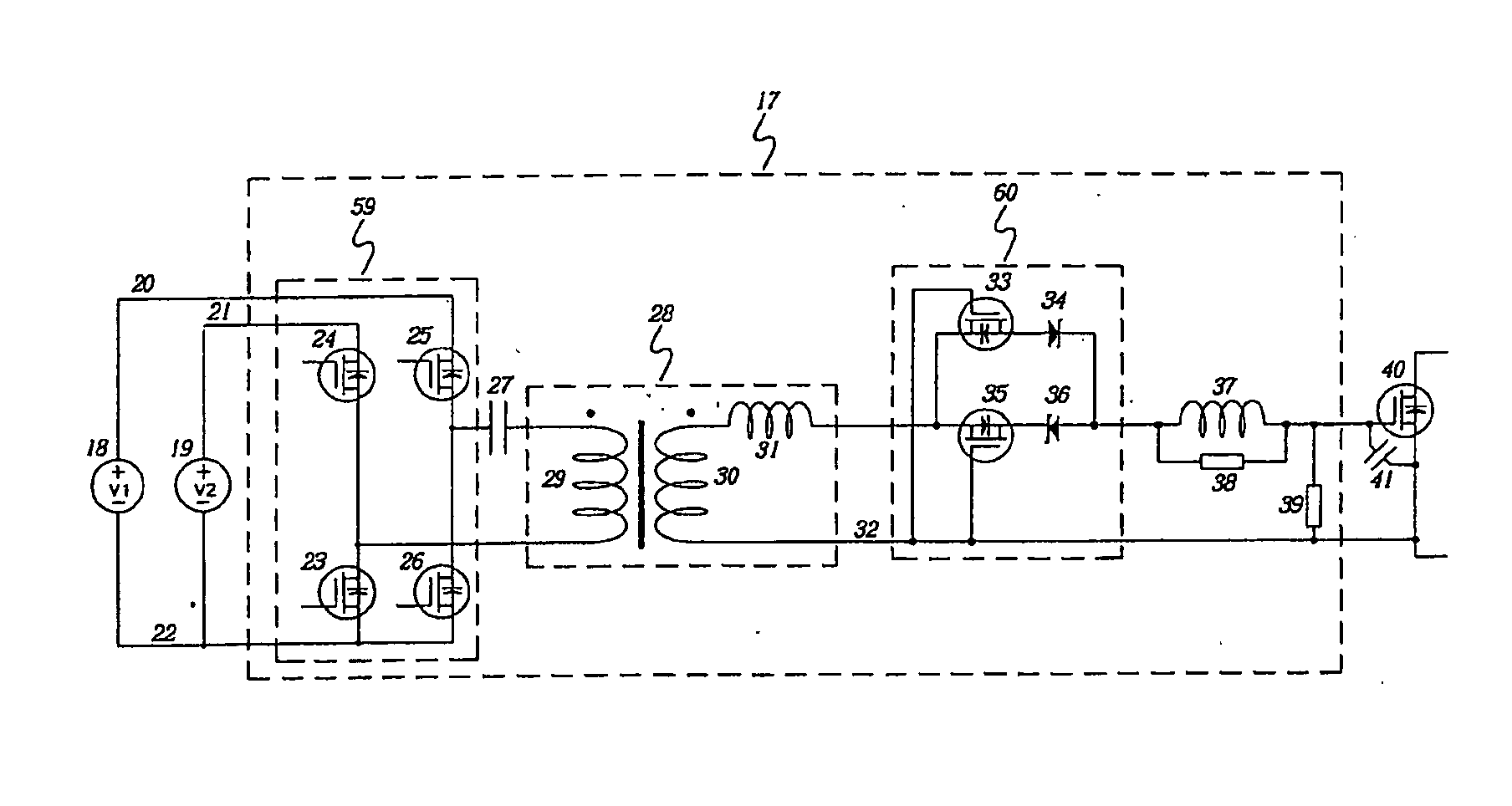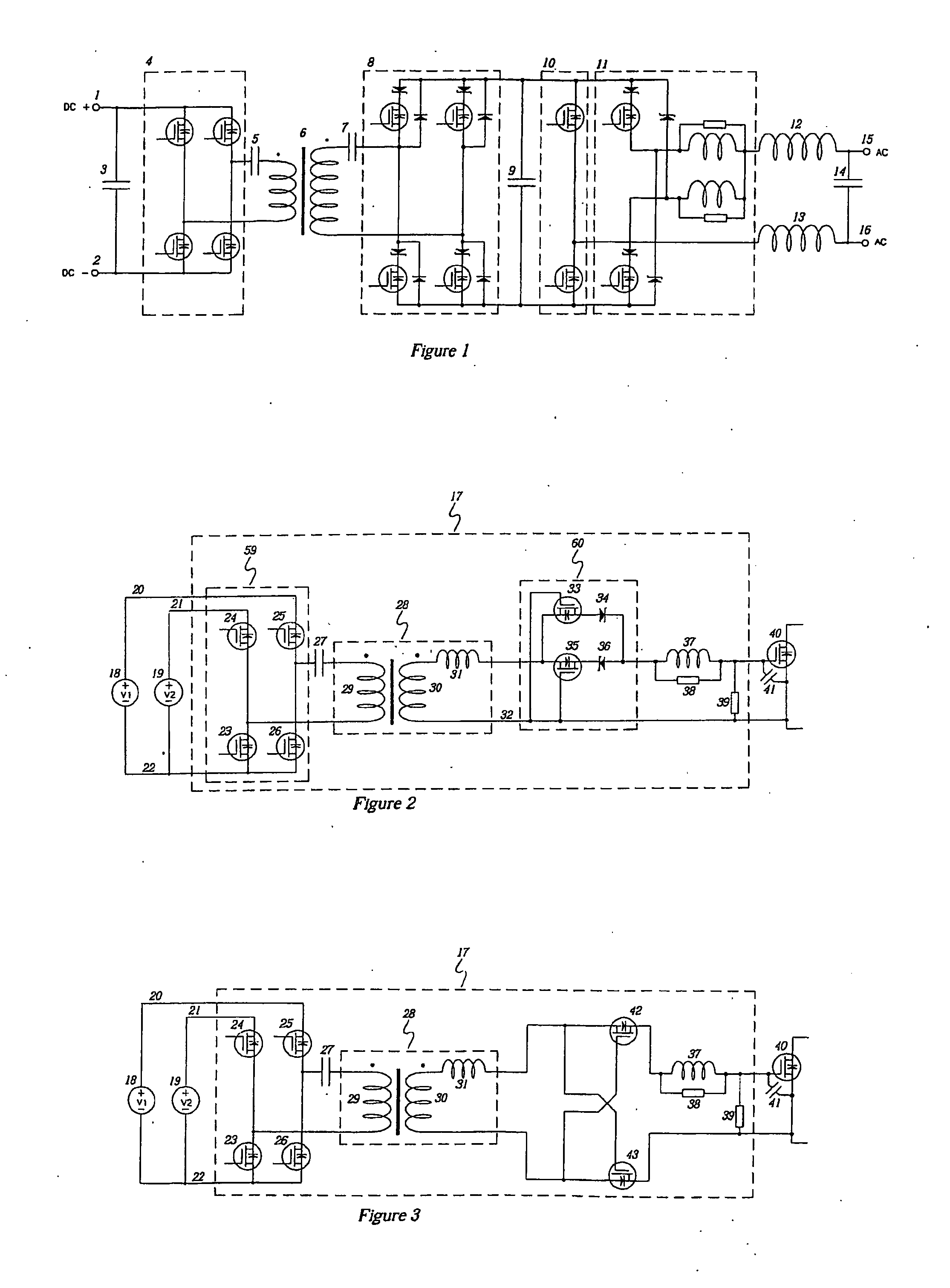Drive Circuit
a drive circuit and circuit technology, applied in the direction of ac-dc conversion, electric variable regulation, instruments, etc., can solve the problems of significant gate capacitance, significant power consumption, and significant standby power of the inverter itself, so as to reduce the gate drive power and improve the efficiency of the inverter
- Summary
- Abstract
- Description
- Claims
- Application Information
AI Technical Summary
Benefits of technology
Problems solved by technology
Method used
Image
Examples
second embodiment
[0068]the drive circuit 17 for a control input of a voltage controlled power switching device (or voltage controlled switch) is shown in FIG. 3. This differs from the embodiment shown in FIG. 2 only in the form of the transition selection circuit. Only the operation of the transition selection circuit will be described as the rest of the circuit operates identically to the embodiment shown in FIG. 2.
[0069]For a positive transition the dot end of the secondary winding 30 of the transformer 28 is positive with respect to its non-dot end. This means that the first n-channel MOSFET 42 will be held off while the second n-channel MOSFET 43 will be turned on. Current will flow through the body diode of the first n-channel MOSFET 42 and return via the second n-channel MOSFET 43.
[0070]For a negative transition the dot end of the secondary winding 30 of the transformer 28 is negative with respect to its non-dot end. This means that the first n-channel MOSFET 42 will be turned on while the sec...
third embodiment
[0072]the drive circuit 17 for a control input of a voltage controlled power switching device (or voltage controlled switch) is shown in FIG. 4. This differs from the embodiment shown in FIG. 3 only in that it shows an alternative location for the resonating inductor 37 and its associated damping resistor 38.
fourth embodiment
[0073]the drive circuit 17 for a control input of a voltage controlled power switching device (or voltage controlled switch) is shown in FIG. 5. This is the same as the embodiment shown in FIG. 3 with the addition of a third voltage source 44 and a fourth voltage source 45. The third voltage source 44 is connected in series with the gate of the n-channel MOSFET 43. The fourth voltage source 45 is connected in series with the gate of the n-channel MOSFET 42. The purpose of the third and fourth voltage sources is to provide reverse bias to the gates of the MOSFETs they are connected to in order to prevent the MOSFETs from being turned on by ringing superimposed on the voltage pulses produced at the secondary winding 30 of the transformer 28. At the end of a positive transition when the voltage produced at the secondary winding 30 of the transformer 28 returns to close to zero, it is likely to ring or overshoot so that the dot end of the winding becomes negative with respect to the non...
PUM
 Login to View More
Login to View More Abstract
Description
Claims
Application Information
 Login to View More
Login to View More - R&D
- Intellectual Property
- Life Sciences
- Materials
- Tech Scout
- Unparalleled Data Quality
- Higher Quality Content
- 60% Fewer Hallucinations
Browse by: Latest US Patents, China's latest patents, Technical Efficacy Thesaurus, Application Domain, Technology Topic, Popular Technical Reports.
© 2025 PatSnap. All rights reserved.Legal|Privacy policy|Modern Slavery Act Transparency Statement|Sitemap|About US| Contact US: help@patsnap.com



